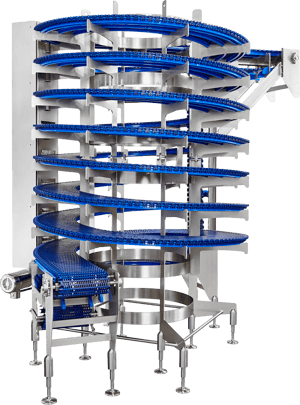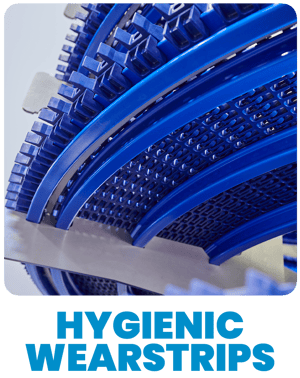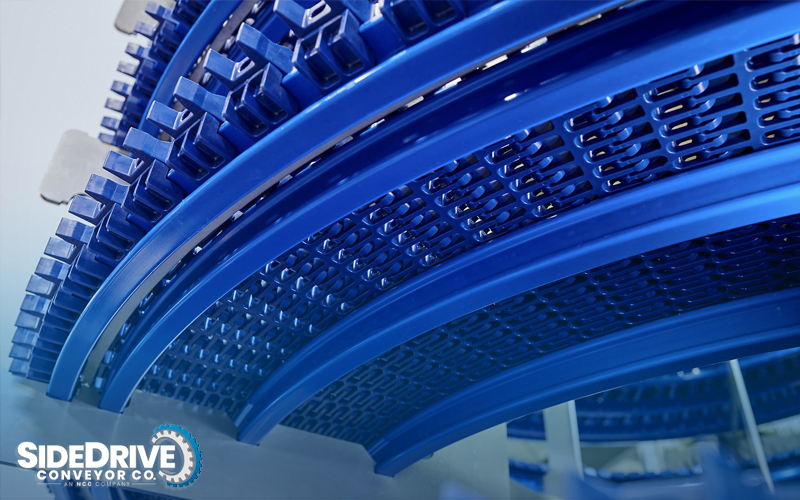In the United States alone, the CDC estimates that a staggering “48 million people get sick, 128,000 are hospitalized and 3,000 die” each year from foodborne diseases.*
Since these diseases not only impact our entire society, but especially those who are medically vulnerable, foodborne illness prevention is essential in order to mitigate risk and reduce exposure to pathogens and disease.
Foodborne illness prevention begins on the farm and ends on the plate. From the time a food leaves where it was grown or harvested to the time it gets on our tables, all points in the supply chain must address potential food safety hazards. For food manufacturers, that includes conveying equipment, which are the arteries of any food production facility, handling products from point A all the way to point Z.
SideDrive’s sanitary spiral conveyors help prevent harborage of foodborne pathogens and disease. Explore these 3 ways sanitary conveyors help with foodborne illness prevention.
 Open Design
Open Design
 Accessibility is essential to washdown. Without proper access to the equipment you are cleaning, it’s nearly impossible to ensure that every nook and cranny is properly washed.
Accessibility is essential to washdown. Without proper access to the equipment you are cleaning, it’s nearly impossible to ensure that every nook and cranny is properly washed.
If you can see it, you can clean it! On the contrary... if you can’t see it, you can’t clean it!
Unlike spiral conveyors with drums, SideDrive’s drumless design allows for easy access for washdown. With easy access, cleaning is not only more effective but also more efficient–protecting consumers from foodborne diseases and yourself from costly recalls while also providing labor savings.
 Hygienic Construction
Hygienic Construction
SideDrive sanitary spiral conveyors are hygienically constructed far beyond their open, drumless design. In fact, they’re jam-packed with features that help with foodborne illness prevention by further reducing harborage points!
 These features include:
These features include:
- Sloped surfaces for easy run-off
- Cantilevered, stainless, open-frame design
- Plate frame structure
- Hygienic feet
- Continuous welds
- Welded standoffs that separate parallel surfaces
- Solid UHMW wearstrips
- Edge-driven belt
- And more!
 Food-Safe Materials
Food-Safe Materials
An open design and hygienic construction help reduce exposure to foodborne pathogens and disease. However, they aren’t enough when it comes to foodborne illness prevention.
SideDrive sanitary belts are made with high-quality plastic belting and components, rather than metal, in order to further ensure the safety of food products. Unlike metal belting, which introduces potential sources of contamination and is more difficult to clean, plastic belting helps mitigate them. To learn more about the benefits of plastic belting, download this resource (in-text link to plastic vs metal download, just a text link, no graphic).
And, although plastic has been used on conveyor systems for some time, not all plastic is equal in its durability or cleanability. That’s why SideDrive sanitary conveyor belting and drive sprockets use Nylatron, which is a durable, easy-to-clean, USDA-compliant nylon plastic.

*Source: Centers for Disease Control and Prevention. (2018, November 5). Estimates of foodborne illness in the United States. Centers for Disease Control and Prevention. Retrieved April 11, 2022, from https://www.cdc.gov/foodborneburden/index.html



 Accessibility is essential to washdown. Without proper access to the equipment you are cleaning, it’s nearly impossible to ensure that every nook and cranny is properly washed.
Accessibility is essential to washdown. Without proper access to the equipment you are cleaning, it’s nearly impossible to ensure that every nook and cranny is properly washed. These features include:
These features include: